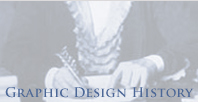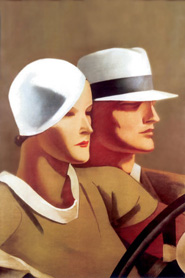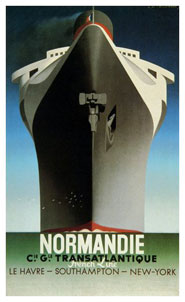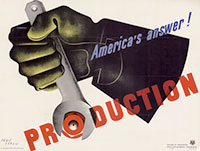| Commercial Illustrators Send an Illustrated Sales Pitch (Type is Secondary) | |||
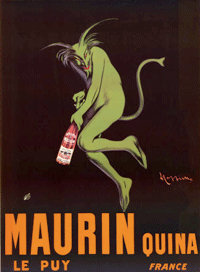 |
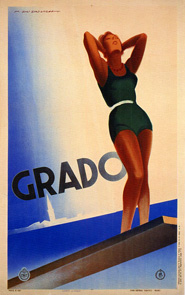 |
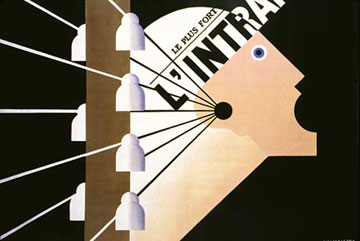 |
|
| Leonetto Cappiello
Cappiello (1875–1942) left his native Italy for Paris where he was exposed to the leading posters artists of the era including Toulouse Lautrec. Cappiello's own distinctive style utilized a black or dark background to create a strong contrast with the product being advertised. The single image used, often not the product being sold, created a strong visual symbol that the consumer associated with a product’Äîan essential key to successful advertising. Cappiello frequently portrayed his subject as devilish or charmingly animated, an outgrowth of his earlier career as a cartoonist. |
Marcello Dudovich
Italian Marcello Dudovich (1878 -1962) was one of the most acclaimed commercial artists of art, prints and posters during his time. He attended the Royal School in his hometown, Trieste. Upon completing his studies, he began working with his father as a lithographer and illustrator for advertising art, prints and posters. During his long he career collaborated with major Italian companies, producing many posters for the cinema and theater. In 1925 at the II Biennial of Decorative Arts and in Paris International Exposition of Modern Decorative and Industrial Arts, where he exhibited posters in the Arte della via of "Street Art", earning a gold medal. |
A.M. Cassandre Born Adolphe Jean-Marie Mouron in the Ukraine, Cassandre (1901–1968) studied at the École des Beaux Arts in Paris. He supported himself by working at a printing firm, an experience that thoroughly versed him in the potentials of commercial lithography. In 1922 he synthesized influences of Cubism and the Purists with air-brushed surfaces and majestic streamlined shapes. His work perfectly matched the image of a sophisticated life style in the 1920's and 30's. Cassandre spent two years in the US creating illustrations for major clients, Harper's Bazaar, Container Corporation of America and N. W. Ayer Advertising.
|
Close inspection of his works reveal a knowledge of the Purist principles and the use of grid structures. In 1924 he created the great L'Intransigeant truck poster. Cassandre's work was seen as a bridge between the modern fine arts and the commercial arts. Despite his affinity to the fine arts he always believed there should be a separateness between disciplines. The success of his posters probably lies in his philosophy that his posters were meant to be seen by people who do not try to see them. In 1936 he traveled to America to work on several projects. While there he designed several surrealistic covers for Alexey Brodovitch at Harper's Bazaar. In addition, he created for NW Ayers, the classic eye of the Ford billboard and several pieces for the Container Corporation of America. His career as a poster designer ended in 1939 when he changed disciplines and became a stage, set and theatrical designer." 1 His lettering inspired several fonts, Bifur, Acier, Acier Noir, Peignot (above),Toiraine (with Charles Peignot) and Cassandre.
|
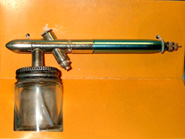 |
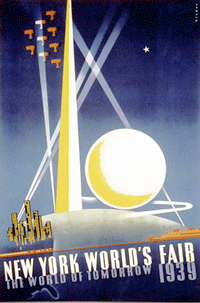 |
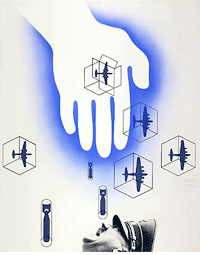 |
|
| The Air Brushers In 1876 F. E. Stanley invented the air brush solely for the purpose of photographic retouching. (Link to the history of air brushes). In 1917 Man Ray created a series of air-brushed paintings, Aerographs, but discontinued them as he felt they looked too much like photography. In the poster world, the photographic inference was an asset for artists including Cassandre, Joseph Binder and Jean Carlu. |
Joseph Binder (1972–1968) trained as a lithographer at the Vienna School of Arts and Crafts. He established a studio, Vienna Graphics, where he designed numerous posters influenced by De Stijl and the Cubists. In 1933 he came to the USA, first as a teacher, and resumed his poster career and garnered international awards. His 1939 World's Fair poster (above) was a masterpiece of airbrushed confidence in technology and modernism. In 1944 he became an American citizen and designed for two more decades before leaving design behind for painting PS. Using a real airbrush is much more fun than the Photoshop version, try one sometime. |
Jean Carlu
Carlu (1900–1997) also influenced by the Cubists, believed in using the least number of elements to convey a strong message. He pre-tested his poster's speed of comprehension, assuring their efficacy in public settings. In 1940 while organizing the exhibition, France at War at the New York World's Fair, the Germans occupied Paris. Carlu remained in the US, a period in which he designed one of his most famous posters (below). |
|
| Footnotes | |||
|
|||
| Copyrights | |||
| ©Designhistory.org 2011 | For Permission Info click here | ||
